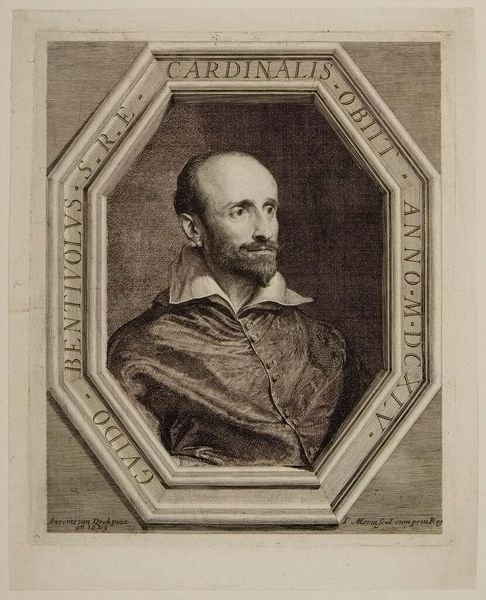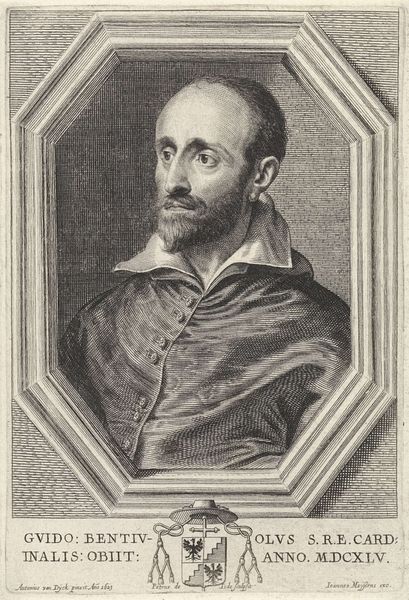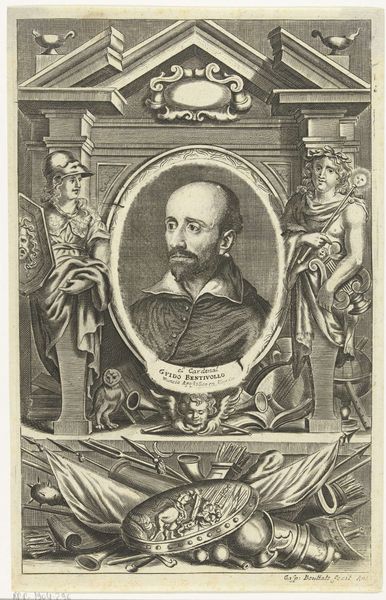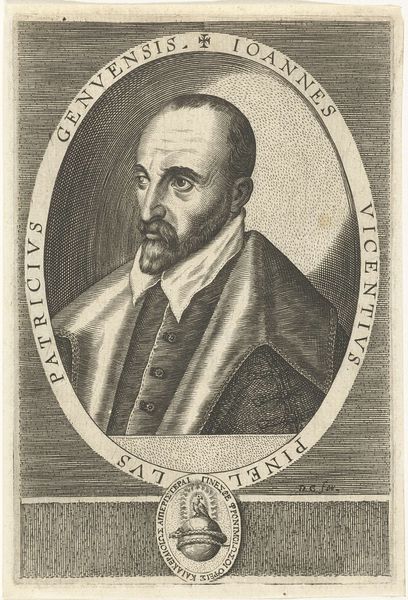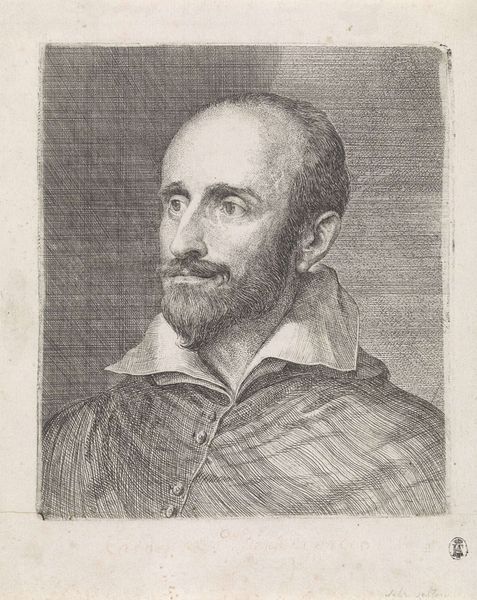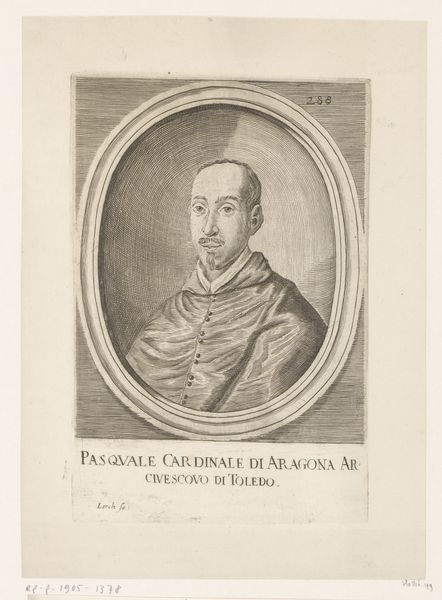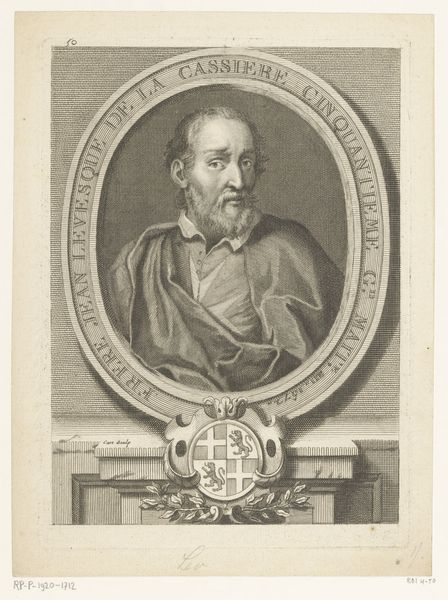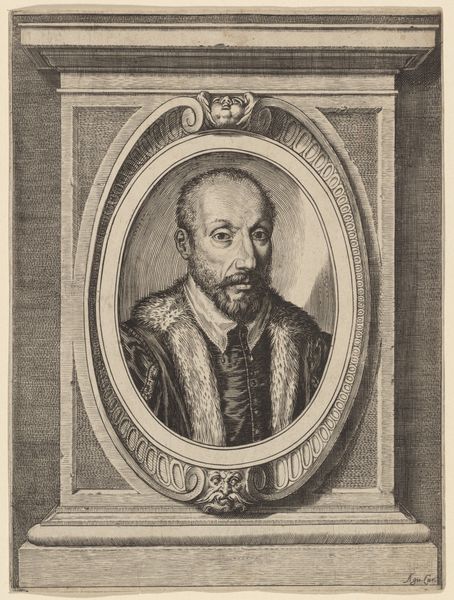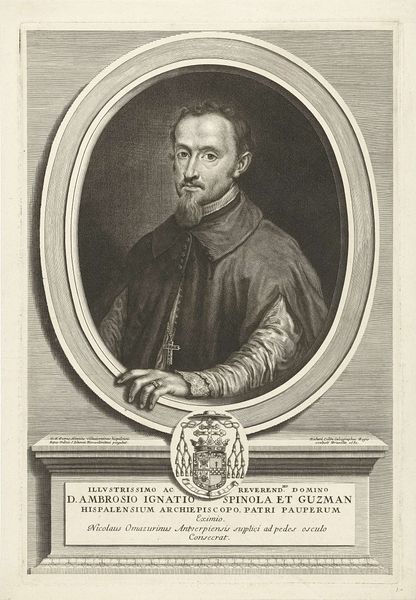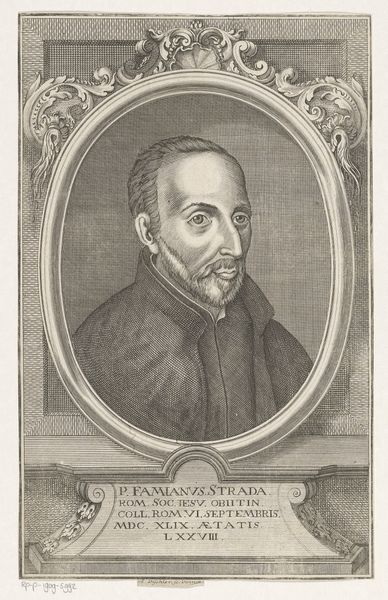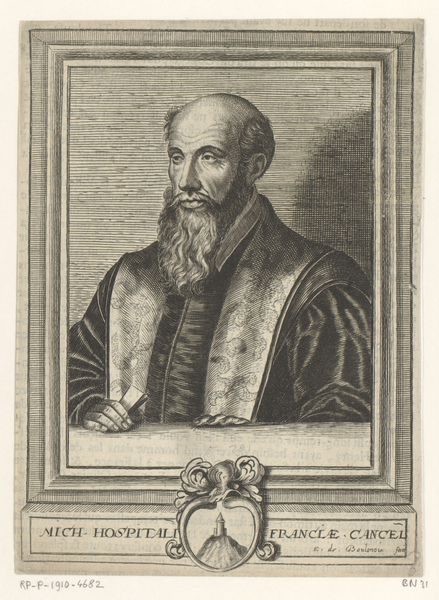
drawing, print, engraving
#
portrait
#
drawing
#
baroque
# print
#
history-painting
#
engraving
Dimensions: sheet: 12 5/8 x 10 5/16 in. (32.1 x 26.2 cm) image: 11 9/16 x 9 3/16 in. (29.3 x 23.3 cm)
Copyright: Public Domain
Editor: This is "Cardinal Bentivoglio," a print made by Jean Morin sometime between 1605 and 1650, now at the Met. It has a very serious and almost somber tone, which really jumps out at me. How do you interpret this work? Curator: The sober tone speaks volumes, doesn't it? Look at the Cardinal framed not just by the literal border, but by the inscription: "Cardinal Bentivoglio, of the Holy Roman Church, Died in the Year 1644." Death frames the image and our perception. How does knowing his death year influences how you perceive the portrait? Editor: It makes me focus on his expression even more. There's a pensiveness there, maybe even a weariness, knowing what's coming. Curator: Precisely! Consider the choice of engraving itself. The sharp lines, the stark contrast, evoke a sense of permanence but also, ironically, of something already past. Think about the historical context – what symbols of power and status would you expect to see, and what's deliberately missing? Editor: Well, usually in portraits of high-ranking religious figures, you see more overtly religious iconography like crosses or robes. Here, he's in fairly simple clothing. Curator: Indeed. The relative lack of outward symbols could signal humility or a focus on inner spirituality over worldly grandeur. Morin's artistic decision places the weight on Bentivoglio's humanity. Does it change your reading knowing it's a print and therefore designed to be disseminated widely? Editor: Yes, that makes me consider how the image functions as a kind of public memorial or a statement about the man’s life beyond his status. Thank you! Curator: A lasting image, carrying a particular cultural weight through time. The power of iconography at work!
Comments
No comments
Be the first to comment and join the conversation on the ultimate creative platform.
